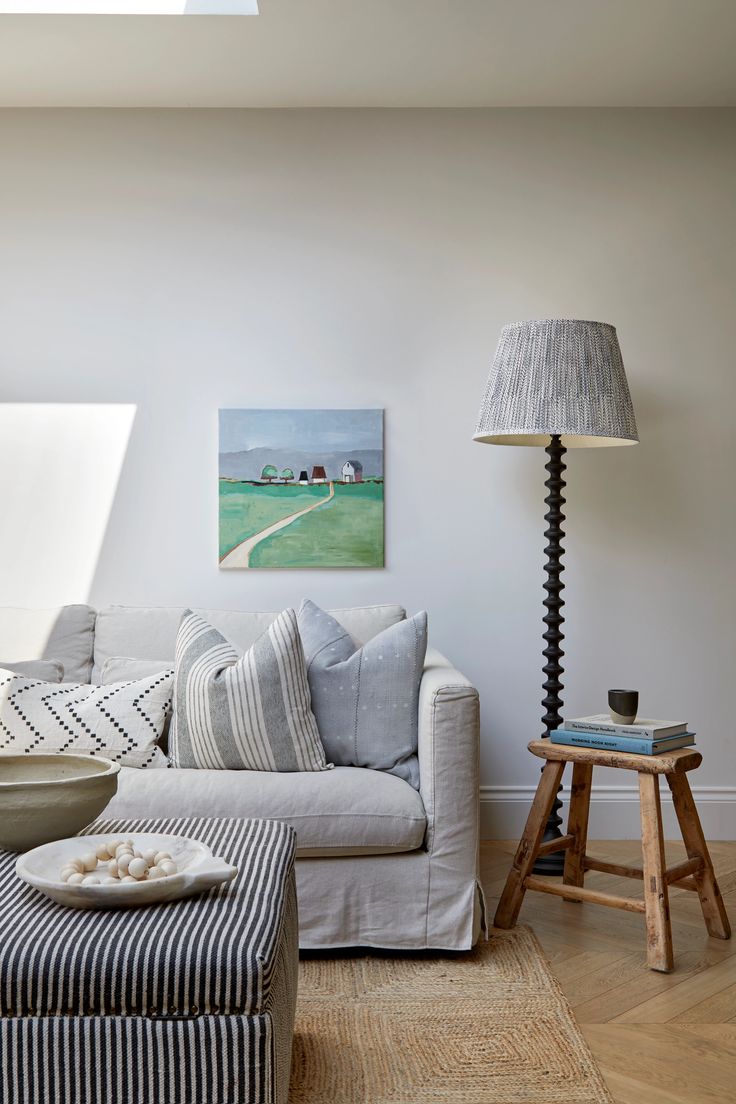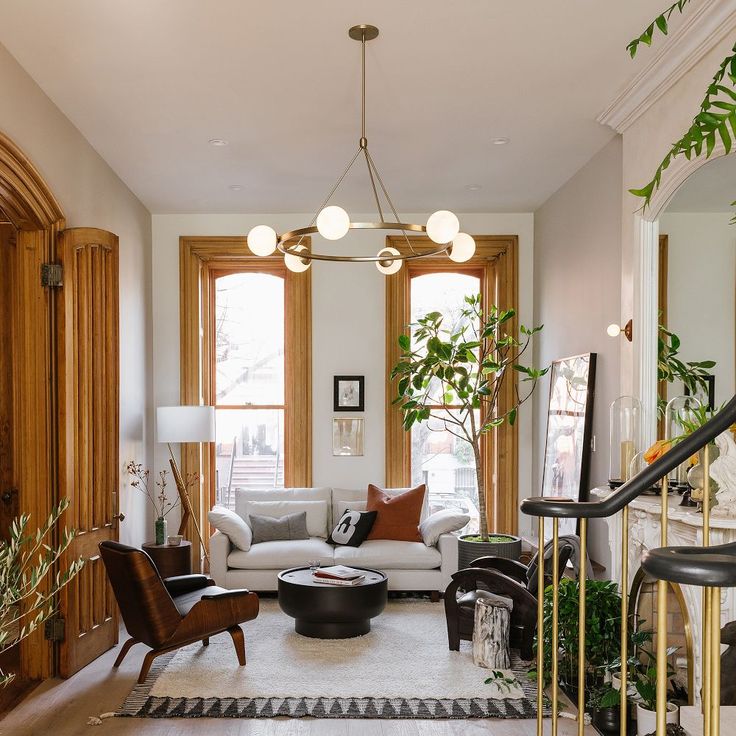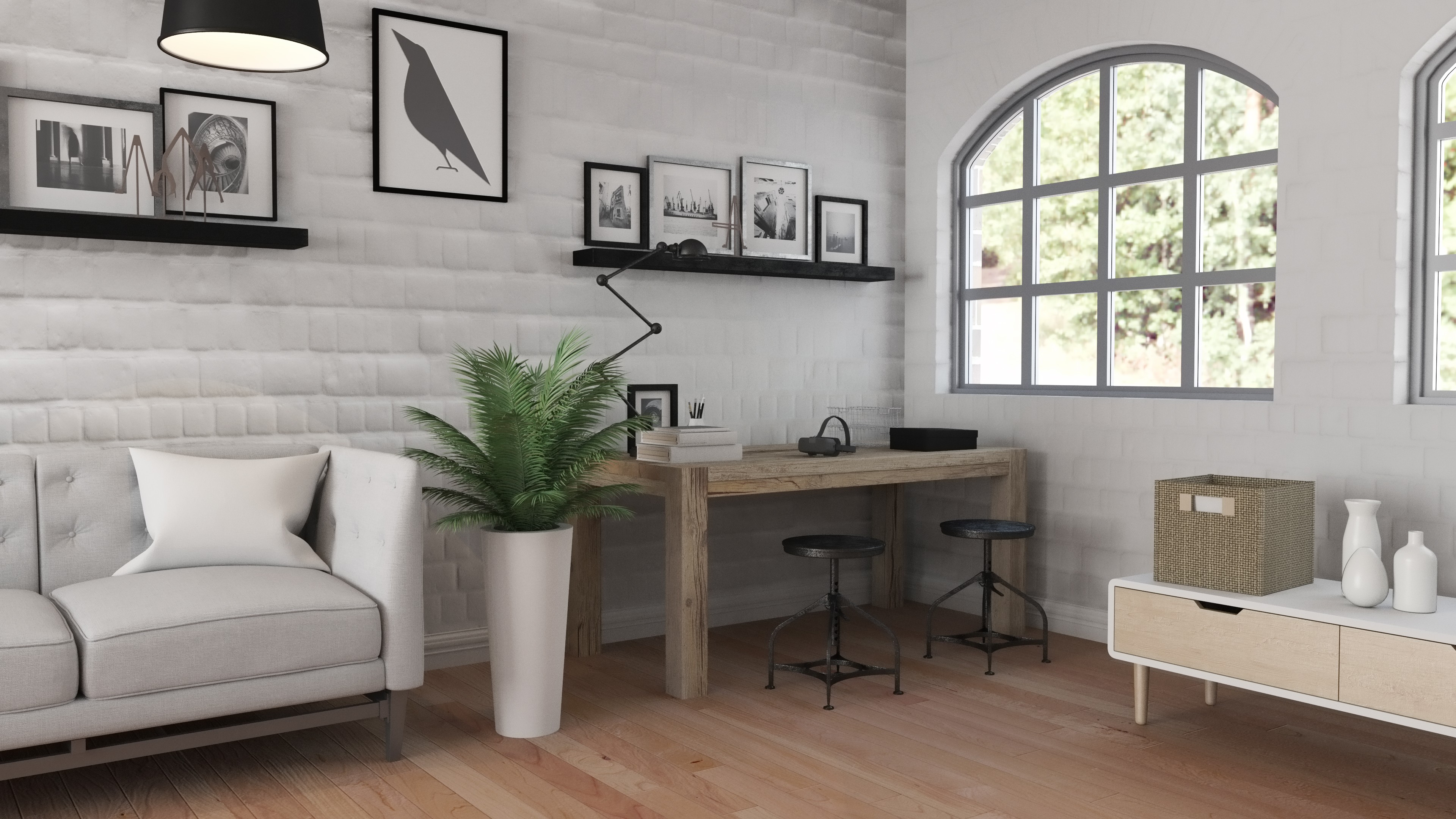December 26,2024
05 min read
Incorporating Art into Your Interior – Displaying Artwork with Style
Interior Tips
Interior Guide

By Roxi Zeeman
Incorporating Art into Your Interior – Displaying Artwork with Style
Introduction
Art has long been recognised as a transformative force in interior design. It injects life into spaces, offering an opportunity to communicate personal style, evoke emotions, and create an inviting atmosphere. Whether it’s a carefully curated collection of modern art or a gallery wall featuring pieces from various periods, artwork can elevate a room, providing a focal point and enhancing its overall aesthetic.
In the dynamic interior design landscape of 2025, particularly in cities like London, art has evolved from being an accessory to a central element of interior design. As we delve into this subject, this comprehensive guide will explore innovative ways to incorporate art into your interiors, providing practical tips and expert insights. Regardless of your taste, budget, or the space you’re working with, this blog will help you understand the nuances of displaying art stylishly and effectively.

1. Curating Your Art Collection: Embrace Personal Style
The foundation of a well-designed space lies in a personal connection with the artwork. Rather than selecting art solely based on trends, curating a collection that resonates with your emotions and interests creates a deeper connection to your home. Whether you’re drawn to vibrant abstract pieces or the calmness of minimalist landscapes, your choices should reflect who you are and how you feel in your home.
Key Features & Design Elements:
Select art that speaks to your personal experiences, memories, and values.
Create a diverse collection that includes a mix of mediums such as paintings, photography, and sculptures.
Consider the size of the artwork relative to the room and its existing furnishings.
Practical Tips:
Don’t rush the process; start small and gradually expand your collection as your tastes evolve.
When choosing art for specific rooms, consider the purpose of the space – serene pieces for bedrooms, energising art for living rooms, and abstract works for open-plan spaces.
Combine different styles and genres of art, but ensure they share a common colour palette or theme to maintain cohesion.
Quote: “Art is the most intense mode of individualism that the world has known.” – Oscar Wilde
2. Creating a Gallery Wall: Art as a Focal Point
A gallery wall remains one of the most effective ways to display multiple pieces of art in a single, cohesive manner. When arranged thoughtfully, it becomes a statement feature in the room. This approach is perfect for showcasing a variety of artworks without overwhelming the space, making it a popular choice for modern homes in cities like London, where style and space optimisation go hand in hand.
Key Features & Design Elements:
Choose a layout that suits the space, such as a grid arrangement for a clean look or an organic, free-flowing pattern for a more eclectic feel.
Use matching frames for a unified look or mix different frame styles for an eclectic yet harmonious display.
The scale of the art should vary to avoid monotony, but it should also maintain balance to avoid visual clutter.
Practical Tips:
Start by arranging the artwork on the floor to experiment with the layout before committing to the wall.
For a clean, modern aesthetic, opt for frames that complement the room’s existing décor.
Ensure the art placement is at eye level to create a natural viewing experience.
Fun Fact: The concept of the gallery wall emerged from the salons of 18th-century France, where artists collectively displayed their works for public viewing and debate.
3. Eco-Friendly Art in Interior Design: A Step Towards Sustainability
As sustainability becomes a core element of modern interior design, eco-friendly art is emerging as a significant trend. In 2025, more homeowners are opting for art created with sustainable materials, reflecting a broader cultural shift towards environmental responsibility. From art created with recycled materials to pieces that celebrate nature, eco-friendly art offers both aesthetic appeal and ethical value.
Key Features & Design Elements:
Artwork created from upcycled or recycled materials, such as reclaimed wood, metal, or fabric.
Support for local artists who use sustainable practices and natural resources.
Art that conveys environmental themes, such as nature-inspired pieces or works made from biodegradable materials.
Practical Tips:
Look for art pieces that are crafted using sustainable materials, such as eco-friendly inks, organic cotton, or reclaimed wood.
Consider supporting local artists who prioritise eco-conscious production methods.
If you’re inclined towards DIY, try creating your own art from upcycled materials to give your home a truly unique touch.
Quote: “Art is a reflection of the times in which we live, and today, that means embracing sustainability.” – Art Industry Expert
4. Statement Art Pieces: One Bold Artwork Can Transform a Room
Sometimes, less is more. A single, striking piece of artwork can command attention and define the tone of an entire room. Large-scale paintings, sculptures, or bold, contemporary pieces can serve as the focal point of a space, adding drama, sophistication, or playfulness.
Key Features & Design Elements:
Oversized art pieces that make a statement and stand out against minimalist or neutral backgrounds.
A piece that complements the room's overall colour scheme, creating harmony and balance.
Bold, modern artworks, such as abstract pieces, geometric shapes, or avant-garde designs.
Practical Tips:
When choosing a statement piece, ensure that its size and colour contrast or complement the room’s existing décor.
Opt for a piece that resonates with your personal style and evokes a response from visitors.
Consider placing the artwork in a central location where it immediately draws the eye.
Fun Fact: Historically, large paintings and tapestries were used in grand estates to showcase wealth, power, and status. Today, these statement pieces continue to hold symbolic significance in modern interiors.
5. Incorporating Art into Functional Spaces
Art can be seamlessly integrated into functional spaces, transforming areas that might otherwise seem mundane into visually captivating zones. Kitchens, bathrooms, and home offices can all benefit from the addition of thoughtfully chosen artwork, adding style and personality to even the most practical areas of your home.
Key Features & Design Elements:
Art that complements the function of the space, such as food-related artwork in kitchens or motivational prints in home offices.
Consideration of factors such as humidity and heat when selecting artwork for bathrooms and kitchens.
Use of smaller, framed pieces or prints that don’t overpower the space but still provide visual interest.
Practical Tips:
In the kitchen, hang prints that relate to food, drink, or the art of cooking. For bathrooms, opt for water-resistant artwork that can withstand humidity.
Home offices benefit from art that promotes focus and creativity. Think motivational quotes or calming landscapes.
Ensure art in these functional spaces is strategically placed and doesn't interfere with the room’s purpose.
Quote: “Art can transform any room, even those that are primarily functional, such as a kitchen or office, into something truly unique.” – Interior Designer
6. Framing and Displaying Art: The Importance of Presentation
How you frame and display artwork is just as important as the piece itself. The right framing not only enhances the art but also ensures that it fits seamlessly into the room's design. From choosing the ideal frame to deciding on the best display method, presentation plays a crucial role in maximising the impact of your art.
Key Features & Design Elements:
Traditional wooden frames, sleek metal frames, or modern acrylic displays.
Frameless options for a minimalist look, such as canvas prints or floating frames.
Attention to the scale and proportion of both the artwork and its frame.
Practical Tips:
Select frames that complement the art and the room’s design, whether that’s a vintage wood frame for a classical piece or a slim, black metal frame for contemporary art.
When framing artwork, consider the colours of the surrounding room. Neutral frames work well with almost any artwork, while bold colours can make a statement.
Avoid overcrowding walls with too many pieces; give each piece room to breathe and be appreciated.
Quote: “The frame should be an accessory to the artwork, not the star of the show.” – Framing Expert
7. Mixing Art with Other Design Elements: A Harmonious Relationship
Art doesn’t exist in isolation; it interacts with the rest of your interior. When thoughtfully combined with other design elements such as furniture, textiles, and lighting, art can elevate a space to new heights. The key to successful integration is ensuring that each element complements the others, creating a unified and harmonious environment.
Key Features & Design Elements:
Strategic placement of artwork in relation to other design elements such as furniture, rugs, and lighting.
Lighting that highlights artwork without causing glare or shadow.
Use of complementary colours, textures, and materials to tie the art to the room’s overall design.
Practical Tips:
Use lighting to highlight key pieces of art, such as adjustable spotlights or wall-mounted fixtures.
Position artwork in relation to furniture and decor to create a cohesive and balanced look.
Consider the texture of the artwork – for example, pairing a glossy painting with matte furniture or a textured print with soft fabrics.
Fun Fact: The way art is lit can dramatically alter its impact, with some works appearing completely different under various lighting conditions.
8. Art for Small Spaces: Maximising Impact in Compact Rooms
In smaller spaces, selecting and displaying art requires extra care. The challenge is to maximise the visual impact without overwhelming the room. In many cases, less is more, and a few carefully chosen pieces can have a more significant impact than a crowded wall of smaller works.
Key Features & Design Elements:
Smaller-scale art pieces or strategically placed large pieces that don’t dominate the room.
Use of mirrors or framed art to create the illusion of space.
Neutral or light-coloured art that adds brightness without making the room feel cramped.
Practical Tips:
Use vertical artwork or smaller pieces to make the most of limited wall space.
Consider using mirrors or reflective artwork to make the room feel larger and more open.
Keep the art in harmony with the room’s decor to ensure that it enhances, rather than overpowers, the space.
Quote: “In a small room, it’s essential that every element serves a purpose – including the art.” – Interior Design Specialist
9. Using Art to Reflect Trends and Cultural Movements
Art has always been a reflection of its time, capturing the essence of cultural, political, and societal movements. Today, more than ever, art serves as a commentary on current global trends. Incorporating contemporary art into your interior design allows you to stay connected to the world around you while adding relevance to your space.
Key Features & Design Elements:
Art that reflects current social movements, environmental themes, or political messages.
Pieces that resonate with global cultural trends, such as the rise of eco-consciousness or the celebration of diversity.
Modern art styles, such as minimalism, geometric abstraction, and pop art.
Practical Tips:
Choose art that resonates with your personal values and beliefs, such as supporting social causes or reflecting a commitment to sustainability.
Attend local art exhibitions to stay informed about the latest trends in contemporary art.
Incorporate art that connects with global movements or reflects cultural shifts in a meaningful way.
Quote: “Art captures the spirit of its time, making it not just a decoration but a conversation about where we are and where we are going.” – Art Historian
10. Budget-Friendly Art Options: Accessible Art for Every Home
Not everyone has the budget for high-end artwork, but that doesn’t mean you can’t incorporate beautiful art into your home. There are numerous affordable options, from prints to DIY creations, that allow you to enjoy the beauty and impact of art without breaking the bank.
Key Features & Design Elements:
Affordable prints or posters that replicate the look of original artworks.
DIY projects using inexpensive materials like canvas, paint, and reclaimed objects.
Buying second-hand or vintage artwork from thrift stores or online platforms.
Practical Tips:
Explore online platforms that offer affordable prints and posters from emerging artists.
Try your hand at creating your own art, which can be both satisfying and cost-effective.
Search for vintage or second-hand pieces at flea markets, estate sales, or online auctions for unique finds.
Fun Fact: Many famous artists, including Picasso and Warhol, created affordable artwork early in their careers, making it accessible to a wider audience.

Why These Trends Matter
The trends in incorporating art into interiors reflect broader societal and cultural shifts. As the world becomes more focused on sustainability, individuality, and creativity, art plays a crucial role in bringing these values into our homes. These trends highlight the importance of self-expression, environmental consciousness, and the growing appreciation for quality over quantity.
FAQs
How can I adapt these trends for smaller spaces?
Focus on small or vertically oriented art and avoid overcrowding the room.
What are some budget-friendly ways to incorporate art?
Look for prints, affordable online platforms, or consider DIY projects.
Can I mix different art styles in one room?
Absolutely! The key is to ensure they complement each other through colour or theme.
What’s the best way to light my artwork?
Use adjustable lighting to highlight the art without creating shadows or glare.
Is it possible to display art in a bathroom?
Yes, as long as the art is water-resistant or framed in a way that prevents damage.
How does art contribute to a sustainable home?
Choose artwork made from sustainable materials or that supports environmental causes.
How can I choose art for a modern living room?
Select bold, contemporary pieces that complement the room’s design.
Can art be functional?
Yes, pieces like mirrors or shelving can serve a dual purpose while adding beauty.
Conclusion
Art is an essential aspect of interior design that brings personality, vibrancy, and meaning to any space. By thoughtfully curating your collection, experimenting with different display methods, and embracing sustainable trends, you can create a home that reflects your unique style while remaining mindful of the world around you.
For more insights and inspiration on incorporating art into your home, explore further articles and trends at souq.studio/blogs. Whether you are looking for design inspiration or tips on eco-friendly interior design, there’s always something new to discover.




